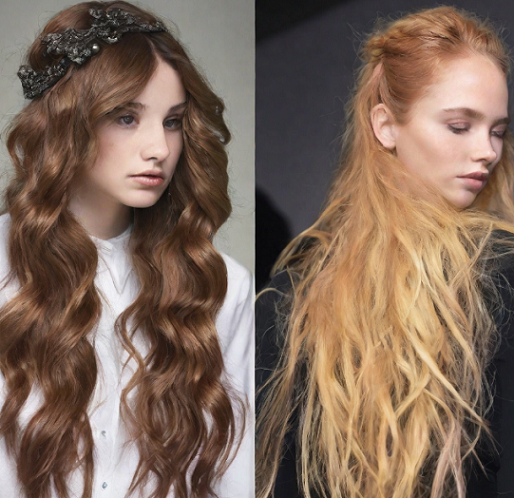Processed vs Unprocessed Hair, What Are the Differences and Which Is Better?
Human hair goes through natural changes over time, the use of various products and tools can alter the appearance and texture of hair. Here we’ll dive into the key differences between processed and unprocessed hair, plus some related questions.
What Is Unprocessed Hair?
Unprocessed hair refers to human hair that has never been chemically processed, with no perming, dyeing, bleaching, or other treatments. Whether straight, wavy, or curly, the hair texture has not been modified. It is relatively healthy and owns high quality.
What Is Processed Hair?
Conversely, the processed hair undergoes chemical treatments to get a different texture or color than the original hair. Common types of processing include coloring/dyeing, straightening, perming, relaxing, etc.
Processed vs Unprocessed Hair - Differences Between Processed and Unprocessed Hair
In the comparison of processed and unprocessed hair, what are the actual differences between them?
1. Structure and composition. Unprocessed hair retains its original cuticle structure, which gives it a smooth, glossy appearance. The cuticle consists of overlapping cell scales that lay flat and protect the inner cortex. Processed hair has raised cuticles from chemical relaxers or heat tools that cause damage, leaving it prone to frizz and breakage.
2. Porosity and humidity. Unprocessed hair has low to medium porosity, meaning it can better retain its natural oils. Processed hair has higher porosity due to a compromised cuticle that allows moisture to easily escape, it requires deeper conditioning to replenish lost hydration.
3. Elasticity and strength. An intact cuticle layer and undamaged inner structure give great flexibility and resilience to unprocessed hair, while processed especially over-processed hair is brittle and more prone to breakage because of repeated treatments and cumulative damage.
4. Appearance and Lifespan. The color of natural human hair is determined by melanin pigment production. Chemical processes alter this pigment through coloring or lightening, which fades over time. Compared to processed hair that has been repeatedly straightened or curled, untreated hair has a longer hairstyle duration before returning to its original texture.
5. Maintenance. Unprocessed hair only requires low maintenance, such as gentle cleansing and conditioning. Processed hair needs specialized products to replenish lost oils without overloading the compromised cuticle, but this can cause product buildup. Regular professional treatments are also necessary to maintain chemically altered hairstyles and colors.
6. Price. Unprocessed hair will be more expensive than processed hair as it is harder to get and is limited in quantities.

Is processed or unprocessed hair better? In general, unprocessed hair tends to be healthier and requires lower maintenance without damage, it usually has a smooth and shiny appearance, however, if you want a certain look or style, some treatments need to be done on your hair. In addition, for hair bundles for sale, processed hair can better blend your hair. A low-level processed hair is recommended, do not get over-processed.
Is unprocessed hair synthetic? No, unprocessed hair is not synthetic, it directly comes from human donors without any alterations made to the internal structure or cuticle layer. Synthetic hair is manufactured from materials that do not contain any natural human strands, such as polyester, nylon, and acrylic, so only virgin human hair in its raw, untreated form qualifies as unprocessed.
Is unprocessed hair the same as virgin hair? Yes, unprocessed hair and virgin hair both have not been undamaged and untreated. The cuticles, cortex, and overall structure remain completely untouched. The hair still retains its original color, texture, and elasticity.
How to fix over-processed hair?
- Deep conditioning treatments: use masks containing moisturizing ingredients like oils, butter, and proteins to help repair damage.
- Hair spa: in-salon treatments like keratin bond reconstruction can help strengthen hair.
- Hydrate with leave-in products: apply lightweight creams or serums to seal in moisture without weight after every wash.
- Limit heat usage: air dry when possible, and reduce styling tools that cause additional harm.
- Protein treatments: weekly masques fortify hair structure.
- Hair trims: getting regular trims removes split ends before they cause breakage higher up the shaft.
- Gentle cleansing: shampoos for damaged hair need to be sulfate-free and won't strip natural oils.
- Style protection: use heat protectant before blow drying or styling to create a shield against temperature damage.
- Supplements from food: the nutrients in your diet may encourage hair growth from the inside out over time.

